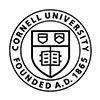Healthcare News
Collaboration underway to advance future of biologics
As advancements in musculoskeletal biologic therapies have grown in the past decade, so has clinical use of these therapies despite insufficient evidence for widespread clinical application.
Isometric Shoulder Exercises
Isometric exercise is a type of exercise in which you contract certain muscles without any other movement. A physical therapist may prescribe isometric shoulder exercises if you have pain or need to regain normal shoulder range of motion, strength, and/or mobility.
Both high- and low-dose exercise therapy found to be beneficial for knee osteoarthritis
Researchers from Karolinska Institutet have compared high dose exercise therapy versus low dose in patients with symptomatic knee osteoarthritis. The study published in the journal Annals of Internal Medicine show that both groups had similar results.
Arthrex receives FDA clearance for pediatric indication of ACL implant
Arthrex Inc. has announced FDA clearance of its TightRope implant for use in pediatric patients with ACL injuries, according to a company press release.
New mechanism uncovered behind osteoarthritis could inform new treatments
Researchers in the United States and Japan have discovered a new mechanism that links age-related cartilage tissue stiffening with the repression of a key protein associated with longevity. These findings enhance the understanding of mechanisms that lead to the deterioration of joints that causes osteoarthritis
How Often Should You Work Out?
Regular exercise is part of a healthy lifestyle. But you might be wondering how much you should work out in a given week to get the most benefits.
Allograft prosthetic composite RSA surgery uses telescope and flange techniques
Given that the articular surface of the allograft will be removed when placing the RSA prosthesis, there is no need to obtain a cartilage-friendly fresh allograft.
Avoiding Hip Replacement: How Stem Cells Can Treat Avascular Necrosis
A Yale Medicine orthopaedic surgeon has developed an innovative procedure that uses a patient’s own stem cells to treat a condition that can cause painful hip fractures.
Clavicle Fracture Treatment: When Is Surgery Necessary?
Clavicle fractures, or broken collarbones, are typically treated without surgery. There is some evidence, though, to suggest that clavicle fractures may heal faster and more predictably when surgical repair is done.
How long does it take to recover from a torn ACL?
Damage to the anterior cruciate ligament (ACL) is a common yet severe knee injury. Most people who experience a torn ACL recover in 3–12 months, depending on injury severity and goals for rehabilitation.


















